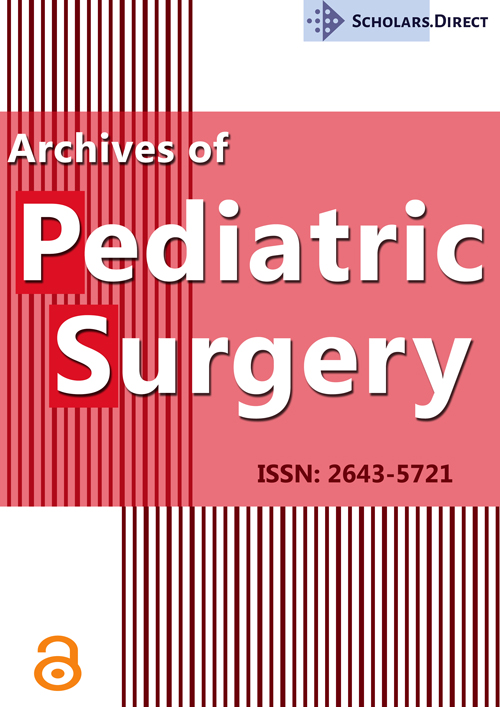Verrucous Venous Malformation and Overgrowth: About Two Cases
Keywords
Verrucous venous malformation, Verrucous hemangioma, Rapamycin, Overgrowth, MAP3K3
Verrucous venous malformations (VVM), previously known as verrucous hemangiomas, are rare congenital vascular anomalies that initially appear as flat blue-red lesions that progressively evolve into very characteristic wart and hyperkeratotic forms. They mainly affect the lower extremities and, unlike angiokeratoma, they extend into the deep dermis, subcutaneous tissue and even reach the fascia [1,2]. Couto, et al. found the somatic mutation MAP3K3 in patients with VVM [3]. Treatment is difficult in large size cases and often requires a multidisciplinary approach including laser, surgery and more recently pharmacological therapy with rapamycin, as described by Zhang, et al. in their retrospective cohort [4,5].
Different patterns of presentation of VVM have been described: Linear, focal, segmental or mixed and, associations such as the segmental pattern associated with brain cavernomas, has been reported by Feldmeyer, et al. in 2014 [6]. On the other hand, there are numerous overgrowth disorders associated with vascular anomalies among which the PROS spectrum represents the best known group [7]. This group of syndromes has a phenotype associated with a well-defined mutation and, in the case of the PROS spectrum, where the PIKC3CA alteration is the cause, inhibitory therapy with drugs such as rapamycin or alpelisib is a targeted treatment line. This has been the motivation for numerous investigations to be able to associate mutations to characteristic phenotypes and thus define specific inhibitory therapies for each type of disorder.
In this context, we believe it is appropriate to report two cases of VVM that associate overgrowth of the affected ipsilateral limb. The first case is a VVM of the lower right limb in a 4-year-old girl with lower limb dismetry 2 cm. It presented as a reddish-blue, warty and hyperkeratotic lesion that responded favorably to treatment with rapamycin, reducing its colour and volume. However, it was observed that the associated limb overgrowth did not remit with this drug and currently forces the patient to wear a shoe lift (Figure 1). The second case corresponds to an VVM in an 8-year-old girl. She presented a bluish, warty and hyperkeratotic lesion on the back of her right thigh accompanied by flat perilesional areas of the same color. In turn, the plantar region and the back of the right foot were affected by a lesion similar to the appearance of the perilesional lesions already described, accompanied by macrodactyly and macropodia of the fourth and fifth toes (Figure 2). It was treated by surgical removal and the genetic test showed positivity for the MAP3K3 mutation.
Up to our knowledge this is the first report of VVM and MAP3K3 mutation associated to overgrowth.
Funding Sources
None declared.
Conflict of Interest
The authors have no conflicts of interest relevant to this article to disclose.
Consent Statement
Obtained.
References
- Cai R, Yang X, Gu H, et al. (2018) Sirolimus for the treatment of "verrucous" venous malformation: Are we missing the lymphatic malformation component? J Am Acad Dermatol 18.
- Clairwood MQ, Bruckner AL, Dadras SS, et al. (2011) Verrucous hemangioma: A report of two cases and review of the literature. J Cutan Pathol 38: 740-746.
- Couto JA, Vivero MP, Kozakewich HPW, et al. (2015) A somatic map3k3 mutation is associated with verrucous venous malformation. Am J Hum Genet 96: 480-486.
- Zhang G, Chen H, Zhen Z, et al. (2019) Sirolimus for treatment of verrucous venous malformation: A retrospective cohort study. J Am Acad Dermatol 80: 556-558.
- Leavens J, Worswick S, Kim GH, et al. (2019) Verrucous venous malformation. Dermatol Online J 25: 0-4.
- Feldmeyer L, Baumann-Vogel H, Tournierlasserve E, et al. (2014) Hyperkeratotic cutaneous vascular malformation associated with familial cerebral cavernous malformations (FCCM) with Krit1/Ccm1 mutation. Eur J Dermatology 24: 255-257.
- Kim M, Keppler-Noreuil, Jonathan J, et al. (2017) PIK3CA-related overgrowth spectrum (PROS): Diagnostic and testing eligibility criteria, differential diagnosis, and evaluation. Physiol Behav 176: 139-148.
Corresponding Author
María Velayos López, Servicio Cirugía Pediátrica, Hospital La Paz, Paseo de la Castellana, 261, Madrid, Spain, Tel: +34-652376654.
Copyright
© 2021 Velayos M, et al. This is an open-access article distributed under the terms of the Creative Commons Attribution License, which permits unrestricted use, distribution, and reproduction in any medium, provided the original author and source are credited.






